Photoshop: Panorama with a twist
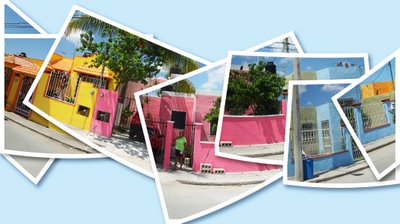
Panoramas don’t have to perfectly or neatly aligned. If you’re looking for a fun way to create a panorama in Photoshop the best way to achieve the effect is to throw away the rule book on how to capture and assemble a panorama and try something a little different. In this article, I’ll show you how to capture the images and create a stylish panorama which is anything but perfect.
Traditionally, you capture images for a panorama using a tripod and taking care to ensure that all the shots overlap and that the camera settings do not change from one image to the next. For my panorama I ignored the rules and captured my images with a hand held camera, ignoring changes in the camera settings and continually varying the camera angle from one image to the next. However, you will still need to have plenty of overlap from one image to the next as the panorama tool needs this to assemble the final image for you.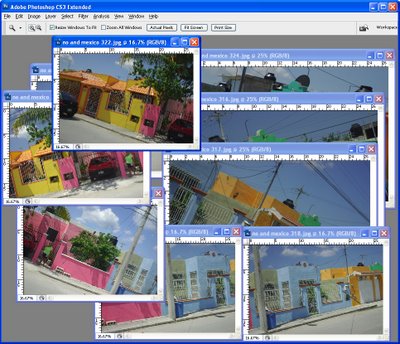
Download the panorama sequence onto your computer and open all the images in Photoshop. Choose File > Automate > Photomerge to open the Photomerge or panorama tool. Select the Cylindrical, Auto or Perspective options – each renders a different result and disable the 'Blend images together' checkbox – this is important as you don't want the images blended at all. Click Add Open Files to select the open files as those to create the panorama from. Click Ok and wait as Photoshop assembles a panorama from the images that you have selected – this may take some time. 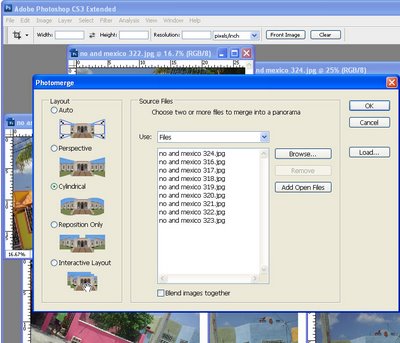
When the process is complete you will have a panorama that is bent in interesting directions with the images making up the scene overlaid over each other in a haphazard arrangement. 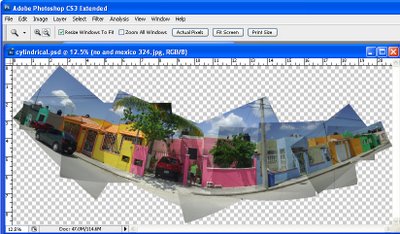
To add the final touches to the project, start by adding a new layer behind the panorama images by choosing File > New > Layer and click Ok. Drag it to the bottom of the layer stack and fill it with your chosen background colour. To get a colour that works with your image, sample one from the image itself using the eyedropper.
To adjust the panorama’s contrast and brightness add a new adjustment layer by clicking on the topmost layer and choose Layer > New Adjustment Layer > Curves. Drag on the curve until you have a result you like. This adjustment layer will affect all the layers in the image. If you need to adjust only one layer, select it and choose Image > Adjustments and select the adjustment to make – doing it this way ensures the adjustment affects only the selected layer. 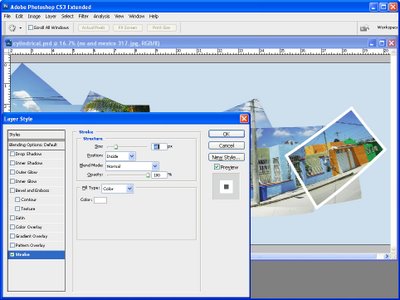
Select one of the layers in the image and click the Add Layer Style icon at the foot of the layer palette. Select Stroke and set the stroke Color to White and add a large enough sized stroke that you can see it clearly. Set the Position to Inside and click Ok.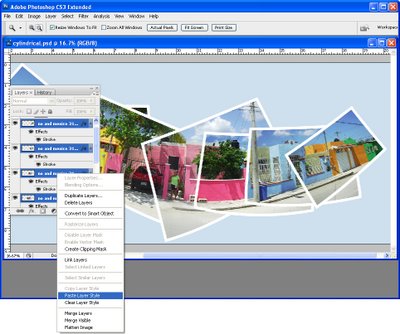
In the Layers palette, right-click on the Layer Style that you just created and choose Copy Layer Style. Select all the panorama layers in the image right-click and choose Paste Layer Style to apply the stroke outline to all the layers.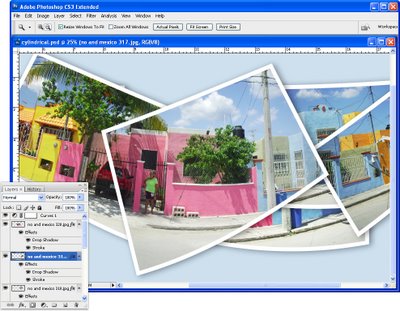
For additional interest, click some of the layers in the image and either drag them a little out of position or drag their layer to a different position so they are more or less visible. You can also add a drop shadow to the layers the same way you applied the stroke outline.
Labels: funky pano effect, panorama, photomerge, Photoshop CS3, Photoshop CS4

12 Comments:
I read stuff on PS, but rarely anything as creative as this. I am really impressed, it is a great idea. And it allows lots of freedom of expression. I am very, very impressed.
Got to remember [and disable the 'Blend images together' checkbox]
Great bit of information shared through this post. Thanks for sharing.
Regards,
clipping path
Great Tutorial, its helpful.... :)
brilliant!
You can do this with one click using neoImaging. Maybe not as much freedom, but same concept.
Here is the link. http://www.facebook.com/photo.php?pid=423804&id=1518114156 to see a version from neoImaging. But probably all pics that you did this with would then look similar.
Thanks for sharing this link. I hadn't heard about Neoimaging before and, from the site, it looks great, the panos aren't exactly like mine shown here but it does have some great features and I really want to try out its cross processing feature, that looks very smart indeed.
Incredible!!.. I like it a lot!! thnx!!!
that's a really quick trick...!! awesome...!! thank's helen....
I like it a lot
So artisitic, and so easy, thank you for the tut it is awesome !
Nice piece of work!
Post a Comment
Subscribe to Post Comments [Atom]
<< Home